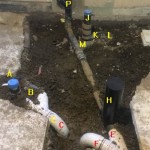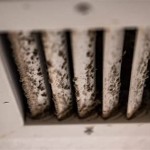What's a Good Humidity Level for a Basement?
Maintaining a suitable humidity level in your basement is crucial for various reasons. Excess moisture can lead to mold growth and structural damage, while insufficient moisture can cause air quality issues and discomfort. Striking the right balance is essential to ensure a healthy and comfortable basement environment.
### Ideal Humidity RangeThe optimal humidity level for a basement typically falls between 30% and 50%. This range allows for adequate moisture to prevent dryness and static electricity, but not enough to promote mold growth or condensation.
### Consequences of High HumidityExcessive humidity in a basement can cause significant problems:
*Mold Growth:
High humidity creates a breeding ground for mold, which can pose health risks and damage building materials. *Structural Damage:
Moisture can penetrate porous materials like wood and drywall, leading to rot and structural weakening. *Condensation:
Excessive humidity can condense on cold surfaces, such as walls and windows, resulting in unsightly water stains and moisture damage. ### Consequences of Low HumidityInsufficient humidity in a basement can also have negative consequences:
*Dry Air:
Low humidity dries out the air, causing discomfort and respiratory issues. *Static Electricity:
Dry air accumulates static electricity, leading to unpleasant shocks and damage to electronic devices. *Wood Shrinkage:
Prolonged exposure to low humidity can cause wood to shrink and crack, compromising the integrity of basement structures. ### How to Control HumidityTo maintain a suitable humidity level in a basement, several measures can be implemented:
*Ventilation:
Proper ventilation allows moisture to escape and prevents air stagnation. Install exhaust fans or open windows to promote air circulation. *Dehumidifier:
A dehumidifier is a device that removes excess moisture from the air. It is a cost-effective and efficient way to control high humidity. *Air Conditioning:
Air conditioners also dehumidify the air as part of their cooling process. *Vapor Barrier:
Installing a vapor barrier on basement walls and floors can prevent moisture from entering the space from the ground or exterior walls. *Basement Sump Pump:
A sump pump helps remove excess water from the basement during heavy rainfall or flooding. ### Monitoring HumidityRegularly monitoring humidity levels in your basement is essential. Use a hygrometer to measure the percentage of humidity in the air. Aim to keep it within the recommended range of 30% to 50%. Adjust control measures as needed to maintain an optimal humidity level.
### ConclusionMaintaining a suitable humidity level in your basement is essential for a healthy and comfortable environment. By understanding the ideal range, recognizing the consequences of high and low humidity, and implementing effective control measures, you can prevent moisture-related problems and ensure a well-ventilated and pleasant basement space.

What Is The Ideal Basement Humidity Level Epp Foundation Repair

How To Lower Your Basement S Humidity Level

The Ideal Humidity Level For Your Basement Reliable Waterproofing

How To Lower Your Basement S Humidity Level

Ideal Basement Humidity And How To Achieve It Epp Foundation Repair

Relative Humidity Chart For Ideal In The House

Here Is The Ideal Humidity For Your Finished Basement

Best Humidity Level For Crawl Space Nia

What Should A Basement S Humidity Be

What Is The Proper Humidity Level In A Home Ranck
Related Posts







